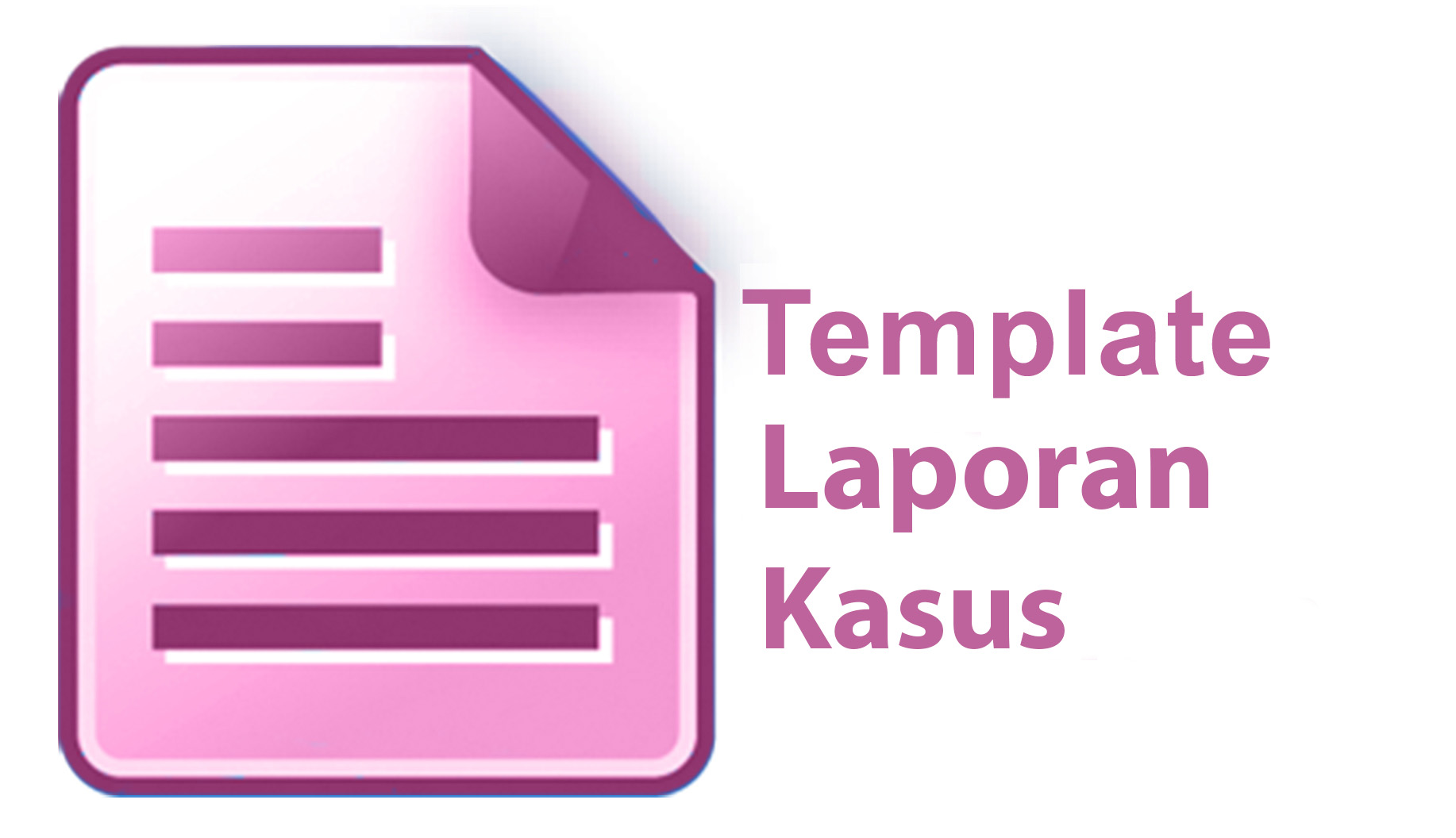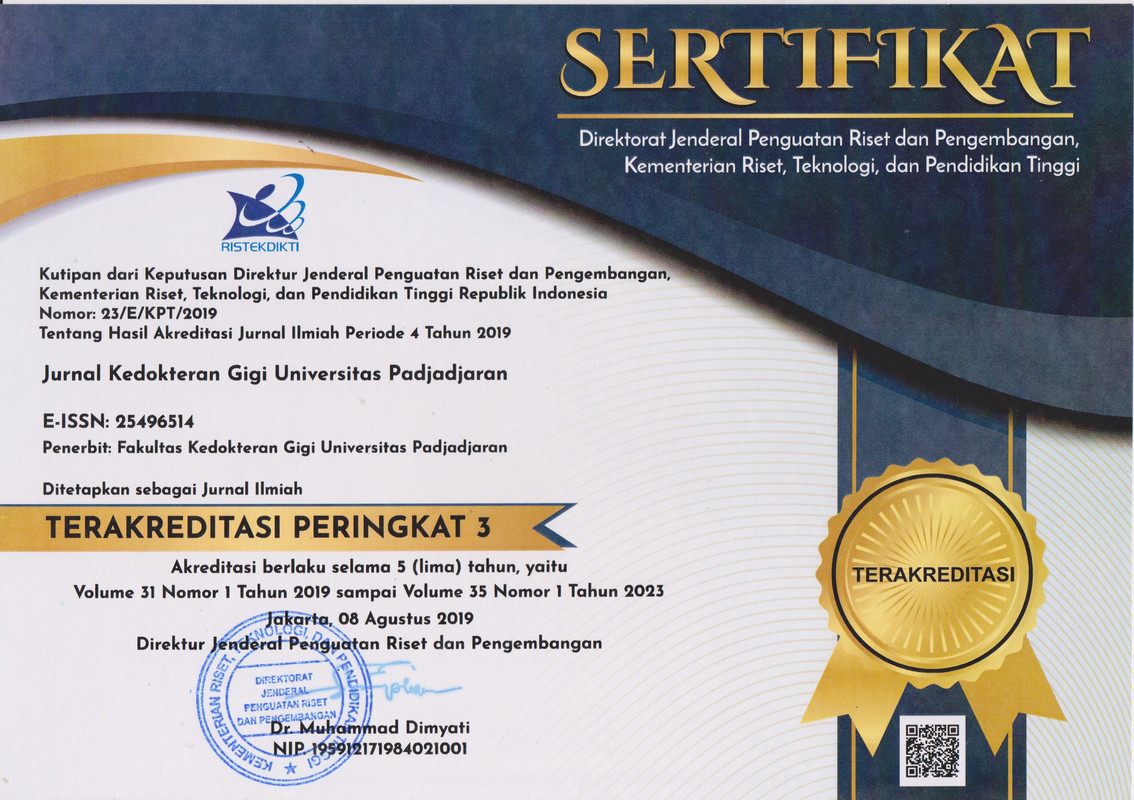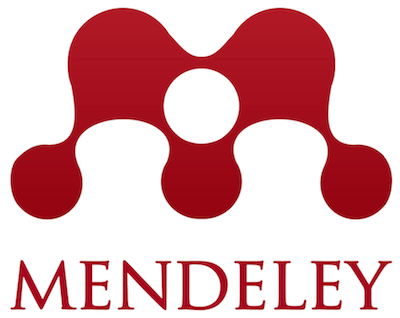Ekstrak daun biduri (Calotropis gigantea) sebagai anti inflamasi dalam menurunkan jumlah neutrofil pada model tikus inflamasi: studi eksperimental
Abstract
Calotropis gigantea leaf extract as an anti-inflammatory agent in reducing neutrophil count in an inflammatory rat model: an experimental study
Introduction: Inflammation is an immune response to harmful stimuli that serves to eliminate tissue damage and initiate healing. The inflammatory process begins with the release of neutrophils, which regulate and amplify the inflammatory response. Non-steroidal anti-inflammatory drugs (NSAIDs), such as aspirin, are commonly used to treat inflammation but may cause side effects. Biduri leaf (Calotropis gigantea)extract which is rich in flavonoids, tannins, and saponins, possesses anti-inflammatory and wound-healing properties with fewer side effects, making it a potential natural alternative medicine. This study aims to evaluate the effectiveness of biduri leaf extract (Calotropis gigantea) in reducing the number of neutrophils during acute and subacute inflammation in an experimental rat model. Methods: This study is an in vivo experimental study using a serial group design. Biduri leaves were extracted using the maceration method with 70% ethanol as the solvent. The biduri leaf extract was administered at doses of 100 mg/kg BW, 200 mg/kg BW, and 300 mg/kg BW. Wistar rats were injected subcutaneously with 2% carrageenan on the dorsal region to induce inflammation. Blood samples were collected at predetermined intervals to prepare blood smears, followed by neutrophil counting. Data were analyzed using two-way ANOVA followed by the LSD post-hoc test. Results: Calotropis gigantea leaf extract at doses of 100 mg/Kg BW, 200 mg/Kg BW, and 300 mg/Kg BW significantly reduced neutrophil counts, particularly on day 3, with the 300 mg/Kg BW dose showing the most pronounced effect (p=0.001). Conclusion: Administration of biduri leaf (Calotropis gigantea) extract at a dose of 300 mg/Kg BW demonstrated the highest effectiveness in reducing neutrophil count during acute and subacute inflammation in an inflammation rat model.
Keywords
Full Text:
PDFReferences
Pohl S, Akamp T, Smeda M, Uderhardt S, Besold D, Krastl G, et al. Understanding dental pulp inflammation: from signaling to structure. Front Immunol. 2024;15:1–20. https://doi.org/10.3389/fimmu.2024.1474466
Sjuhada Oki A, Amalia N, Tantiana. Wound healing acceleration in inflammation phase of post-tooth extraction after aerobic and anaerobic exercise. Sci Sports. 2020;35(3):168.e1-168.e6. https://doi.org/10.1016/j.scispo.2019.06.001
Chen L, Deng H, Cui H, Fang J, Zuo Z, Deng J, Li Y, Wang X, Zhao L. Inflammatory responses and inflammation-associated diseases in organs. Oncotarget. 2017;9(6):7204-7218. doi: 10.18632/oncotarget.23208.
Germolec DR, Shipkowski KA, Frawley RP, Evans E. Markers of inflammation. Methods Mol Biol. 2018;1803:57–79. https://doi.org/10.1007/978-1-4939-8549-4_5
Riaz B, Sohn S. Neutrophils in Inflammatory Diseases: Unraveling the Impact of Their Derived Molecules and Heterogeneity. Cells. 2023 Nov 13;12(22):2621. https://doi.org/10.3390/cells12222621
Hannoodee S, Nasuruddin DN. Acute inflammatory response. Nature. 2024;206(4979):20. https://doi.org/10.1038/206020a0
Kumar MM, Abbas AK, Aster JC. Buku Ajar Patologi Dasar Robbins. Elsevier Health Sciences. 2019. P. 10.
Mamarimbing MS, Putra IGNAD, Setyawan EI. Aktivitas antiinflamasi ekstrak etanol tanaman patah tulang (euphorbia tirucalli l.). Humantech J Ilm Multidisip Indo. 2022:2(3):502–503. https://doi.org/10.32670/ht.v2i3.1452
Marifah R, Tjandra O. Survei pola penggunaan obat anti inflamasi non steroid (OAINS) di Puskesmas Tanjungrejo Jekulo Kudus periode Januari-Juni 2019. Tarumanegara Med J. 2022;4(2):321–325. https://doi.org/10.24912/tmj.v4i2.20817
Katzung BG. Basic & Clinical Pharmacology. McGraw-Hill Education. 2018. p. 14.
Danapur V, Annapurna G, Hadimani G. Standardization and biological activity of Calotropis gigantea. Int J Sci Res. 2023;9(IV). https://doi.org/10.37421/2472-0992.2023.9.247
Ningsih DS, Celik I, Abas AH, Bachtiar BM, Kemala P, Idroes GM, et al. Review of the ethno-dentistry activities of Calotropis gigantea. Malacca Pharm. 2023;1(1):8–15. https://doi.org/10.60084/mp.v1i1.31
Ahmad W. Preliminary phytochemical, antimicrobial and photochemical study of Calotropis gigantea leaf extract. Curr Chem Lett. 2020;9(3):105–112. https://doi.org/10.5267/j.ccl.2019.10.001
Raja R, Kishore N, Sreenivasulu M, Rasoolbee SK, Nandini S, Ooha L, et al. Calotropis gigantea—botanical, pharmacological view. J Med Plants Stud. 2016;4(2):87–89.
Riong KK. Histopathological Overview of Gastric Inducted by Aspirin® and Given Extract of Thistle Leaf (Calotropis gigantea) on Albino Rats. J Basic Medl Veterin. 2022;11(2):98–110. https://doi.org/10.20473/jbmv.v11i2.39770
Dermiati T, Kamal A, Tibe F, Anggi V. Uji antiinflamasi ekstrak etanol kulit batang ceremai (phyllanthus acidus l.skell) terhadap edema kaki tikus. Farmakologi J Farmasi. 2018;15(1):1–8.
Widyarini S, Sugiyono, Akrom AM, Paryuni AD. Carrageenan-induced acute inflammation on back-skin of mice: histopathological features, number of inflammatory cells, and expression of COX-2, COX-1, and IL-6. World’s Veterinary J. 2023;13(4):520–530. https://doi.org/10.54203/SCIL.2023.WVJ55
Tabtila U, Yunita SE, Pratama MN, Handajani J. Neutrophil count in the gingival wound healing process after apitoxin gel application (gingival wound healing model on Wistar rats). Maj Kedokt Gigi Indo. 2021;6(2):65. https://doi.org/10.22146/majkedgiind.37084
Riaz B, Sohn S. Neutrophils in inflammatory diseases: unraveling the impact of their derived molecules and heterogeneity. Cells. 2023;12(22):1–34. https://doi.org/10.3390/cells12222621
Misfa O, Utami R, Irenesia B, Marwan D. Efektivitas ekstrak spirulina platensis sebagai antiinflamasi terhadap jumlah neutrofil dan makrofag pada luka yang diinfeksi staphylococcus aureus pada tikus wistar. Nommensen J Medic 2022;8(1):34-38. https://doi.org/https://doi.org/10.36655/njm.v8i1.735
Angiolillo DJ, Prats J, Deliargyris EN, Schneider DJ, Scheiman J, Kimmelstiel C, et al. Pharmacokinetic and pharmacodynamic profile of a novel phospholipid aspirin formulation. Clin Pharmacokinet. 2022;61(4):465–479. https://doi.org/10.1007/s40262-021-01090-2
Patrono C. Low-dose aspirin for the prevention of atherosclerotic cardiovascular disease. Eur Heart J. 2024;45(27):2362-2376. https://doi.org/10.1093/eurheartj/ehae324
Sivapalan S, Dharmalingam S, Venkatesan V, Angappan M, Ashokkumar V. Phytochemical analysis, anti-inflammatory, antioxidant activity of Calotropis gigantea and its therapeutic applications. J Ethnopharmacol. 2023;303:115963. https://doi.org/10.1016/J.JEP.2022.115963
Wadhwani BD, Mali D, Vyas P, Nair R, Khandelwal P. A review on phytochemical constituents and pharmacological potential of: Calotropis procera. RSC Adv. 2021;11(57):35854–35878. https://doi.org/10.1039/d1ra06703f
Zulfikar T, Sutriana A, Rozaliyana A. Phytochemical screening of three extraction process of calotropis gigantea. IOP Conference Series: Earth and Environmental Science 1356. 2024;1-6. https://doi.org/10.1088/1755-1315/1356/1/012082
Pudji A, Meilawaty Z, Suci AW, Dharmayanti, Setyaningsih S. Penapisan fitokimia dan kandungan flavonoid total tanaman Calotropis gigantea: studi eksperimental laboratoris. J. Kedokt. Gigi Univ. Padjadjaran 2023;35(2):119. https://doi.org/10.24198/jkg.v35i2.46685
Tong Z, He W, Fan X, Guo A. Biological function of plant tannin and its application in animal health. Front Vet Sci. 2022;8:1-7. https://doi.org/10.3389/fvets.2021.803657
Singh S, Young A, McNaught CE. The physiology of wound healing. Surgery (Oxford). 2017;35(9):473–477. https://doi.org/10.1016/J.MPSUR.2017.06.004
Liu W, Cui X, Zhong Y, Ma R, Liu B, Xia Y. Phenolic metabolites as therapeutic in inflammation and neoplasms: Molecular pathways explaining their efficacy. Pharmacol Res. 2023;193:106812. https://doi.org/10.1016/j.phrs.2023.106812
Yahfoufi N, Alsadi N, Jambi M, Matar C. The immunomodulatory and anti-inflammatory role of polyphenols. Nutrients. 2018;10(11):1–23. https://doi.org/10.3390/nu10111618
Handoyo DLY, Rahman F, Potensi ekstrak daun widuri (calotropis gigantea) sebagai antiinflamasi secara topikal. J Farmasi Tinctura 2024;5(2):58-64
DOI: https://doi.org/10.24198/jkg.v37i2.61210
Refbacks
- There are currently no refbacks.
Copyright (c) 2025 Jurnal Kedokteran Gigi Universitas Padjadjaran
INDEXING & PARTNERSHIP

Jurnal Kedokteran Gigi Universitas Padjadjaran dilisensikan di bawah Creative Commons Attribution 4.0 International License






.png)

















